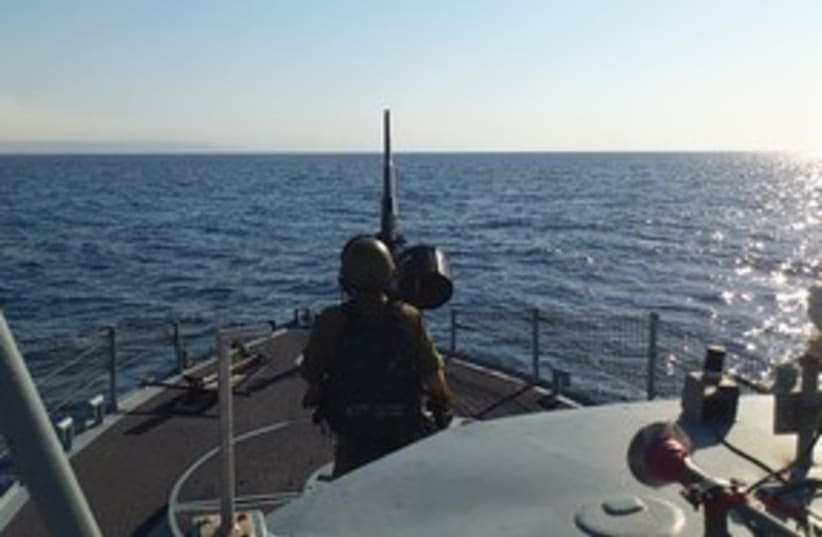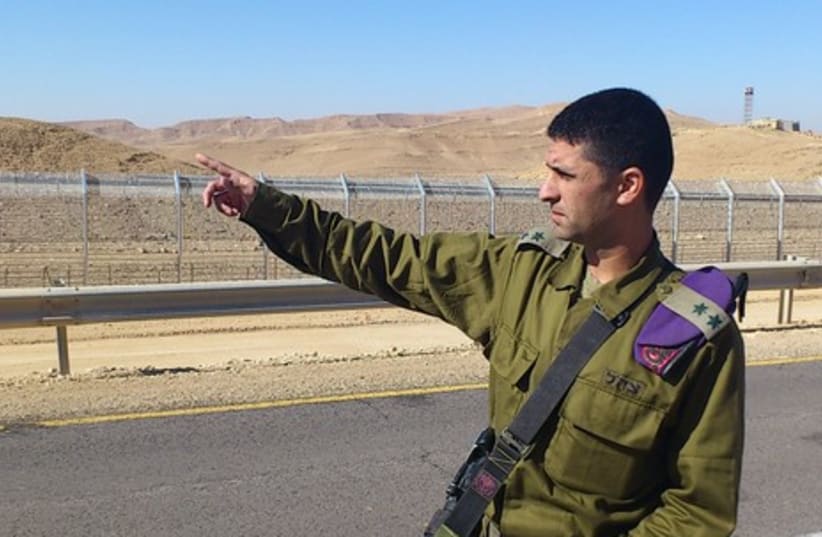
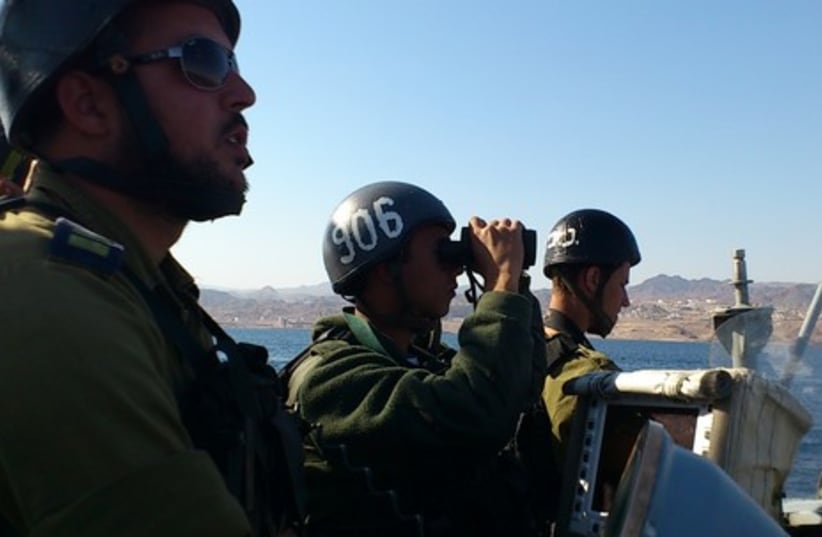
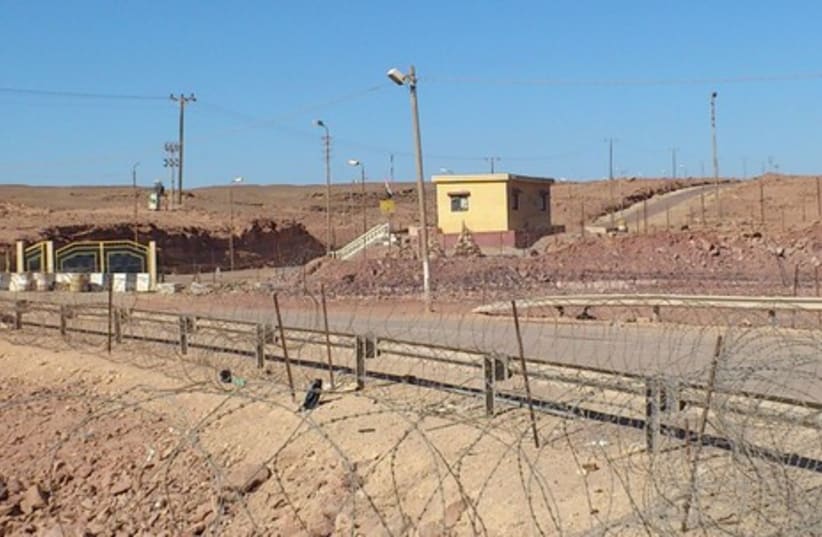

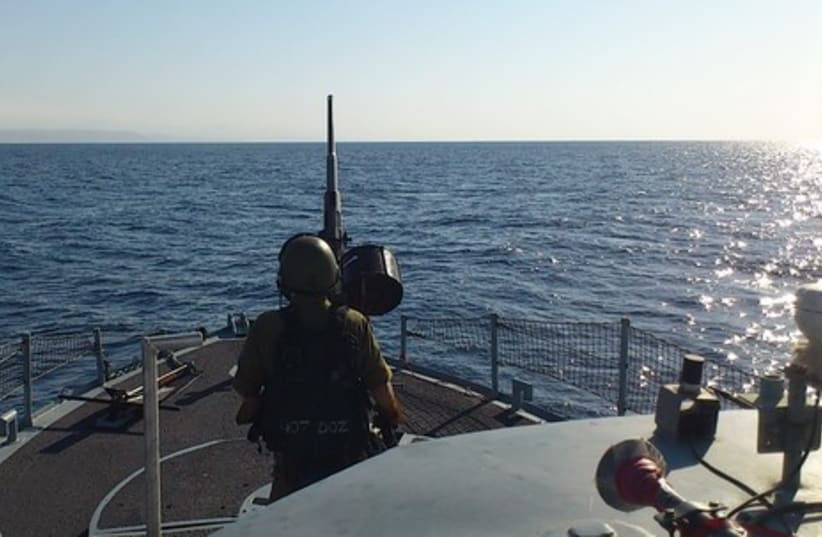

On Thursday, The Jerusalem Post toured the border with officers from the IDF’s 80th Division and received an insider’s look at how the military plans to thwart terrorist attacks. In August, eight Israelis were killed in a coordinated terrorist assault along the border.Since then, the navy has boosted the number of electronic sensors along the coast. It can now detect and track targets the size of soda cans floating in the sea, said Lt.-Cmdr. Ronen, commander of the patrol ships in the Red Sea.“The border between Israel and Sinai continues into the sea, and when one part is closed there might be someone on the other side who thinks that they can try to come into Israel a different way, maybe via the sea,” he told the Post. “We understand that our operations have significant and strategic consequences.”RELATED:IDF to investigate Egypt border incidentsDecember sees significant rise in terror incidentsOne of the noticeable changes on land is the rapid pace of construction along the 240-kilometer border, 100 kilometers of which are now closed by a newly built barrier.In August, for example, there was barely any barbed wire along the section of the border used by the terrorists to cross into Israel.Last week, the Defense Ministry completed the construction of a 6-meter-high fence wrapped with barbed wire along the entire section.In addition, the IDF plans to erect new fortified positions along the border to protect key strategic locations, such as the Netafim crossing, 12 km. north of Eilat. It is also investing large resources in intelligence gathering, to create a clearer understanding of terrorist groups that operate in Sinai.Road 12, where the attack took place last summer and which runs just meters away from Egypt, remains closed due to the threat, although the IDF is confident that it will be able to open to the public soon.“There are a number of challenges within this area, proven by the terror attack in August,” Lt.-Col. Tal Carmel, the 80th Division’s chief operations officer, told the Post during a tour on Thursday of the scene of the attack. “We are working to secure the border and are doing everything possible to protect Israel and Israelis.”Another change along the border is the placement of small concrete blocks every few kilometers on Road 12.The idea, Carmel explained, is that if cars came under fire from within Egypt, they would be able to find cover behind them.The IDF has also established a new brigade along the border, currently under the command of OC Nahal Brigade Col. Amir Abulafia. The new unit will receive its own brigade commander when it receives all of the necessary manpower and units, something expected to happen in 2012. The army has also established a new Combat Collection Unit, which is responsible for operating the electronic sensors – cameras and radars – along the border.At sea, the situation is not that much different and the IDF is working hard to improve its defenses. After the tour of the border, the Post joined the navy on a patrol mission in the Red Sea, off the coast of Eilat, Aqaba and Taba.
The sea was calm but the sailors aboard the Dvora-class fast patrol boat were on high alert, a direct result of the attack in August and the development of the new terrorist threat in the Sinai Peninsula.The threats on the Navy’s mind include a potential terrorist infiltration by sea into Eilat, an attempt to detonate an explosives-laden boat next to an Israel Navy vessel and an attack against a vessel by an anti-ship missile.“Before the revolution in Egypt, the threats that we prepared for were for the most part theoretical,” explained Ronen. “Now, we know that they are real, and that is why even if we lack intelligence about a specific attack we prepare ourselves according to the capabilities we know are on the other side.”